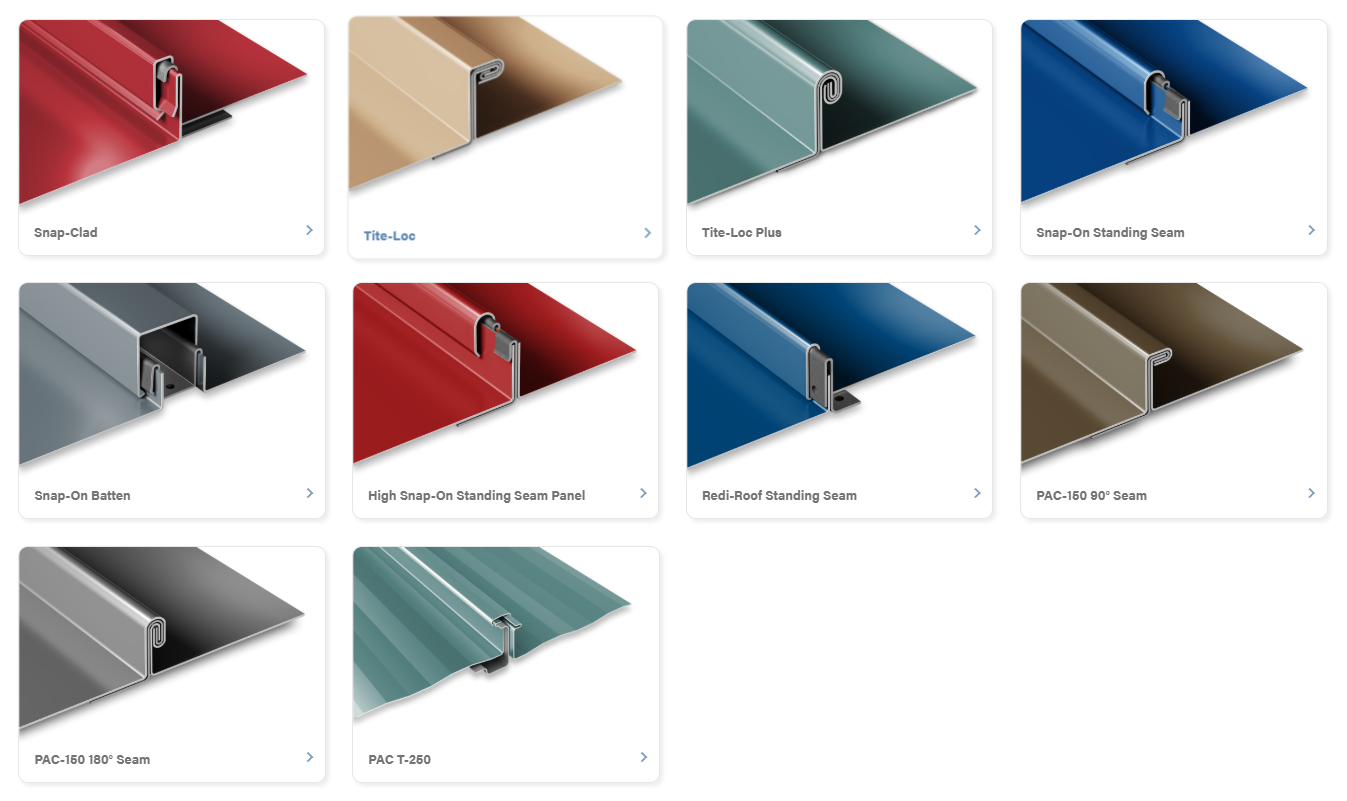Metal roofing is a roofing system that features metal sheets or shingles that are corrosion-resistant, waterproof, and long-lasting. It is an integral part of the building envelope. Sheets can be a covering for a structural, non-waterproof roof or a self-supporting sheet.
Corrugated metal roofs are prefabricated sheets that are bent and corrugated to make them stronger.
Prices for corrugated metal roofs are similar to asphalt shingle roof installation prices. Fasteners are screwed through the metal into the roof, requiring more maintenance to ensure the screws are secure. If properly maintained, corrugated metal roofs can last 30-45 years
Metal roof panels combine architectural beauty with structural performance. Snap-Clad panels are produced in continuous lengths, are screed for excellent flatness, and come with optional factory-applied sealant strips for increased weather resistance. Maximum panel length is 64 feet and minimum is 4 feet. Consult factory for longer lengths. Note: Minimum panel length is 60 inches at the Annapolis, MD, plant.
Each metal roof panel has 1-3/4-inch leg height and features a continuous interlocking construction for increased structural performance and wind resistance. The concealed fastener clip system allows for thermal expansion/contraction while providing exceptional hold-down strength. Two clip options are available: a standard clip for most pitched roof and fascia applications and a high-performance clip for roof applications and UL 90-rated assemblies.
Trim
All flashings and trims shall be fabricated by the manufacturer or a qualified fabricator. Flashing shall be PAC-CLAD aluminum (specified as .032 – .063 gauge) or PAC-CLAD steel (specified as 24 gauge or 22 gauge). A 35-year non-prorated finish warranty is available, covering finish performance. Vinyl masking is recommended for all fabricated applications requiring additional treatment. NOTE: Peel-off membrane must be removed immediately after installation.
Installation
Snap-Clad panels are suitable for roof, pitched roof, and eave applications. Substrates may include 5/8-inch (minimum) plywood, nailboard insulation, or equivalent with ice protection flashing applied horizontally from eave to ridge. Other substrates may include sheet metal or rigid insulation used in conjunction with load bearing panels. A minimum slope of 2:12 is recommended in most applications. Contact Petersen for details on projects requiring lower slopes. For coastal applications, aluminum panels and stainless steel clips must be used to obtain warranty. Consult local architect/engineer for compliance with local codes and conditions.

